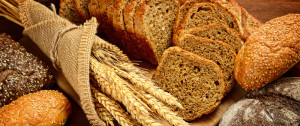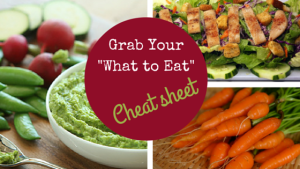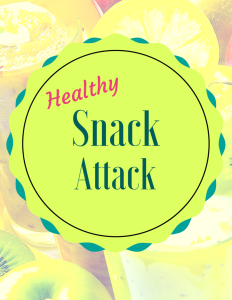[av_textblock size=” font_color=” color=”]
Going gluten free doesn’t have to be daunting:
Going gluten free has been a stumbling block for so many looking for better health…but it doesn’t have to be. I am gong to teach you some ways to take baby steps into your new way of eating and how to make it a painless process. First, let’s take a look at what gluten is and what it does in the body.
Gluten is the sticky protein found in wheat, barley and rye. The problem with gluten is that it can cause inflammation in the gut that causes a loosening of the tight junctions. This inflammation causes a perforation in the walls of the small intestine allowing the protein particles to pass thru the its’ walls and into the rest of the body. The body sees these gluten proteins as an invader and begins to attack them causing the inflammation. While you may not be one of the 1 in 1000 people that suffers with the debilitating celiac disease (gluten intolerance causing severe gas, bloating, cramping and diarrhea) it is for certain that your system is sensitive to gluten just by the mere nature of it’s affect of inflammation in the body. Remember, if a body is busy fighting inflammation, it can’t focus on things such as a proper functioning metabolism.
The reasons to give up gluten:
- The undigested portions of wheat begin to ferment, producing gas and bloating
- Wheat is an inflammatory agent that also causes a rise in the fat storing hormone insulin
- Gluten causes the production of a chemical called zonulin which causes the damage in the walls of the intestines that leads to a leaky gut. Leaky gut syndrome is a condition where these foreign proteins are leaking from your gut into your bloodstream. The body sees this as a toxin and begins to attack causing inflammation
- Wheat is one of the top allergens and contains very little nutritional value, not to mention that has a very high incidence of being a genetically modified organism.
- It is your gut that determines cravings, when you feel hungry and how food is metabolized so if the gut is not functioning properly then it is certain that these things won; be functioning properly either
How to let go…
1) Clean out the kitchen – Make the right things to eat the easiest things to eat. Begin by weeding out the obvious gluten offenders such as baked goods (cakes, pretzels, bagels), breads, pastas, tortillas and cereal. Any item that contains wheat, barley and rye.
2) Check your condiments: Gluten can be found in so many items that you wouldn’t readily expect. Check your marinades, salad dressings, sauces, beer.
3) Give away the unopened gluten filled items to your local food bank, church or other organization in need.
4) Fill your pantry and fridge with naturally gluten free foods:
- Rice, Quinoa, polenta,
- Items made with spelt, amaranth or buckwheat
- Legumes, beans
- sweet potatoes, a variety of colored vegetables and fruits
- Lean meats – chicken, grass fed beef, wild game, fatty fish (salmon, sardines, mackerel)
- Use coconut and almond flour as a substitute for bleached or wheat flours
You can download my “What to Eat Cheat Sheet” to help you choose the right foods in the right proportions:
Get your Cheat Sheet
5) Look beyond food – If you are highly sensitive to gluten you will need to take a look beyond your food. products such as shampoo, lotions and even toothpaste can contain gluten
6) Remove gluten from just one meal at a time. Unless you are an all-or-nothing kinda of guy, baby steps can make the change a little easier. This method allows you to take some time figuring out which foods can be replaced at certain meals…for example, what will you do about Saturday morning pancakes? Replacing one meal at a time makes the switch feel doable. Be prepared with meals and recipes that will help you succeed. (check out my gluten free and clean eating Pinterest boards to help you plan some meals) Try replacing gluten laden items at dinner with an additional vegetable. We like to do one cooked vegetable and one raw veggie at dinner time to get a variety of enzymes that help with better digestion of food.
7) Have plenty of healthy snacks on hand so when you get the urge to reach for the old gluten filled foods you used to eat you will have quick, healthy options at the ready.
Here’s a little freebie for you…I get asked quite often about what are some healthy “go to” snacks…well, here they are, just for you and they are all gluten free! Enjoy!
8) Be creative about your use of vegetables as bread substitutes…sliced cucumbers, sliced and roasted sweet potatoes and lettuce leaves make great fill ins.
9) Watch out for “gluten free” substitutes – So often it seems like an easy “out” to grab a loaf of gluten free bread or a box of gluten free snacks. Remember, that these foods are still often highly processed and contain sugars and starchy wheat flour substitutes that can raise blood sugar inducing post meal cravings and fat storage. Try to stick with whole real foods as listed in the “What to Eat Cheat Sheet” above!
10) There’s an app for that!
There are some excellent apps for your phone out there that can make shopping for gluten free foods MUCH easier. Check these out:
I love all of the apps from fooducate. They are a great tool to use when trying to shop healthier and even better for teaching your kids to make healthy choices. The design is simple and much like a report card which children can relate to. They have added a gluten free app to their list!
Dining out:
Ok, now go get started! Pick the items on this list that will work best for where you are today. When you have one handled, add another. Best of luck to you…and your guts! 🙂
[/av_textblock]




